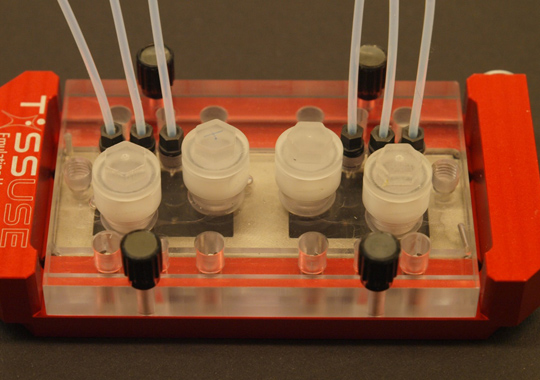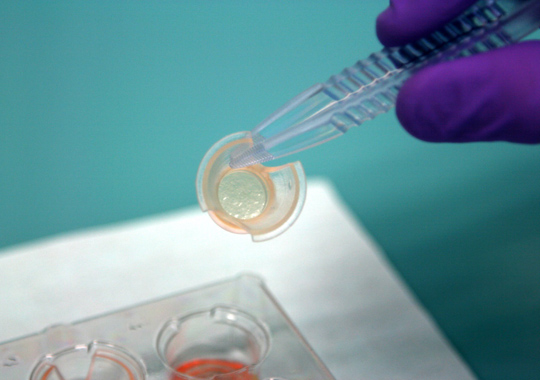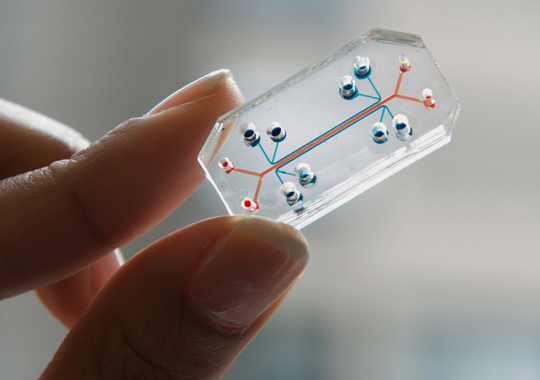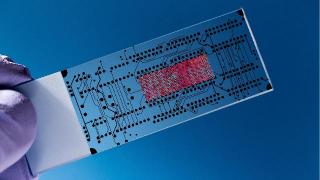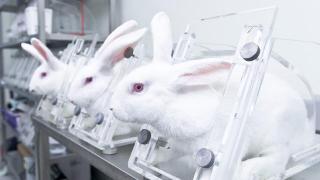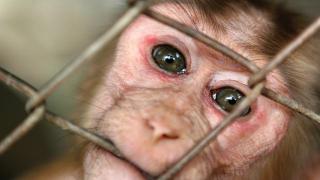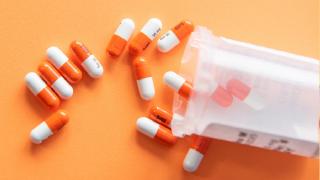Non-animal methods are often cheaper, quicker and more effective
Replacing animal tests does not mean putting human patients at risk. It also does not mean halting medical progress. Instead, replacing animals used in testing will improve the quality as well as the humanity of our science.
Thankfully, the development of non-animal methods is growing, and fast. Due to innovations in science, animal tests are being replaced in areas such as toxicity testing, neuroscience and drug development. But much more needs to be done.
Once new non-animal methods have been developed, there are often massive bureaucratic hurdles to implementing and enforcing their use. One of the most important jobs the Cruelty Free International science team does is encourage regulators to accept and promote the use of non-animal methods to replace animal testing.
Image Gallery
Types of non-animal methods
Cell cultures
Almost every type of human and animal cell can be grown in the laboratory. Scientists have even managed to coax cells to grow into 3D structures, such as miniature human organs, which can provide a more realistic way to test new therapies.
Human cells have been used to create innovative little devices called “organs-on-chips”. These can be used instead of animals to study biological and disease processes, as well as drug metabolism. Devices have already been produced that accurately mimic the lung, heart, kidney and gut. The ultimate goal is to use these chips to create a whole “human-on-a-chip”.
Cell cultures have been central to key developments in areas such as cancers, sepsis, kidney disease and AIDS, and are routinely used in chemical safety testing, vaccine production and drug development.
Human tissues
Both healthy and diseased tissues donated from human volunteers can provide a more relevant way of studying human biology and disease than animal testing.
Human tissue can be donated from surgery (e.g. biopsies, cosmetic surgery and transplants). For example, skin and eye models made from reconstituted human skin and other tissues have been developed and are used to replace the cruel rabbit irritation tests.
Human tissue can also be used after a person has died (e.g. post-mortems). Post-mortem brain tissue has provided important leads to understanding brain regeneration and the effects of Multiple Sclerosis and Parkinson’s disease.
Computer models
With the growing sophistication of computers, the ability to “model” or replicate aspects of the human body is ever more possible.
Computer models of the heart, lungs, kidneys, skin, digestive and musculoskeletal systems already exist. They can be used to conduct virtual experiments based on existing information and mathematical data.
There are also data mining tools that can help make predictions about the likely hazard of one substance based on existing data from other, similar substances.
Volunteer studies
Advances in technology have allowed for the development of sophisticated scanning machines and recording techniques that can be used to study human volunteers safely.
Brain imaging machines that can ‘see’ inside the brain can be used to monitor the progression and treatment of brain disease. They can help researchers understand the causes by comparing with healthy volunteers.
An innovative technique called microdosing can also be used in volunteers to measure how very small doses of potential new drugs behave in the human body. These microdoses are radio-labelled, injected into human volunteers and measured (usually in blood samples) using a very sensitive measuring device called an accelerator mass spectrometer.
Less high-tech studies for nutrition, drug addiction and pain can also be carried out on consenting humans in the interest of advancing medical science. These studies can help replace animal tests and come with the obvious advantage that people are able to explain how they are feeling.
Medical breakthroughs using humans
- We are told that insulin therapy would not have been discovered unless animal researchers had removed the pancreas from dogs in the 1920s. But the important clues actually came much earlier from observations of human patients.
- Brain surgery in Parkinson’s patients identified the best place for Deep Brain Stimulation electrodes to be placed in the brain to improve symptoms, decades before the “discovery” in monkeys.
- Alois Alzheimer first described the main features of Alzheimer’s disease in 1906 by studying brain segments from patients after they had died.
- Human population studies led to the discovery that smoking causes cancer. Smoking does not cause cancer in mice and rats.
- An Australian doctor used himself in an experiment to discover the main cause of stomach ulcers. He drank a culture of bacteria and became sick before curing his symptoms with antibiotics.
- A German chemist tested the effects of aspirin on himself after an accidental discovery that it helped relieve pain in a patient with toothache.
- The anaesthetic effect of laughing gas was discovered when someone accidentally cut their leg while under the influence of the gas. An American dentist then confirmed the effects on himself while having a tooth removed.
Non-animal methods perform better than animal tests
- Crude skin allergy tests in guinea pigs and mice only predict human reactions 72% and 74% of the time, respectively. But approaches combining chemistry- and cell-based alternative methods have been shown to accurately predict human reactions up to 85% of the time.
- The notorious Draize skin irritation test in rabbits can only predict human skin reactions 60% of the time. But methods using reconstituted human skin are up to 86% accurate.
- Tests on animals to find out if chemicals or drugs may harm the developing baby can only detect 60% of dangerous substances. But a non-animal test using human stem cells has 93% sensitivity at detecting substances known to cause developmental problems.
- Cruel and unreliable shellfish toxin testing using live mice has now been fully replaced with a far superior analytical chemistry method that is better at protecting humans from shellfish poisoning.
The science relating to animal experiments can be extremely complicated and views often differ. What appears on this website represents Cruelty Free International expert opinion, based on a thorough assessment of the evidence.
FIND OUT MORE ABOUT ANIMAL TESTING
Alternatives to animal testing
subtitle: Alternatives to animal tests are often cheaper, quicker and more effective.
Our History
subtitle: Established in 1898, Cruelty Free International is firmly rooted in the early social justice movement and has a long and inspiring history.
Facts and figures on animal testing
subtitle: Millions of animals are used and killed in the name of progress every year.
What is animal testing?
subtitle: Animals used in laboratories are deliberately harmed, not for their own good, and are usually killed at the end of the experiment.
Arguments against animal testing
subtitle: Animal experiments are cruel, unreliable, and even dangerous.
Types of animal testing
subtitle: Animal testing is carried out in a wide range of areas, including biological research, and testing medicines and chemicals.

